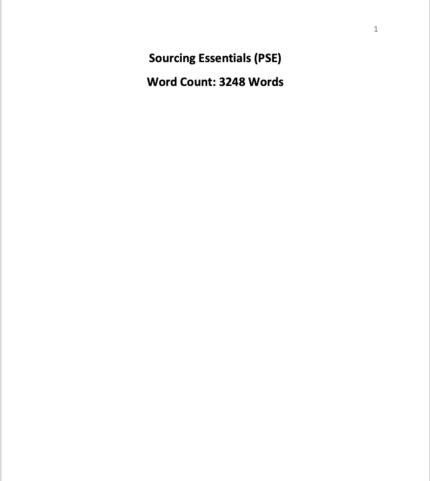“(Solution) NEW Oakwood International 5OS06 Assessment ID / CIPD_5OS06_23_01” has been added to your cart. View cart
“(Solution) New 5HR01 (AC1.1) Differentiate between employee involvement and employee participation and how they build relationships” has been added to your cart. View cart
“(Solution) ROSHN CIPS PIN Market Analysis” has been added to your cart. View cart
“(Solution) CIPS ADNOC Driving Value through Procurement and Supply Managing Expenditures with Suppliers” has been added to your cart. View cart
“(Solution) CIPD Avado 5C002- Evidence-based Practice” has been added to your cart. View cart
“(Solution) 5C003 reasons why this is important and the consequences of people practitioners not being willing or able to influence others (AC 1.3)” has been added to your cart. View cart
“(Solution) recommendation essential and help Proximie achieve its performance and growth objectives” has been added to your cart. View cart
“(Solution) CIPD AC 2.2: The legal requirements of equal pay” has been added to your cart. View cart
“(Solution) Level 5 CIPD 5OS04: People Management in an International Context” has been added to your cart. View cart
“(Solution) CIPD 7OS05 Challenges facing people practice managers in international organisations” has been added to your cart. View cart
“(Solution) CIPD 5CO02 measure the impact and value of people practice” has been added to your cart. View cart
“(Solution) CIPS Strategy Relationship with Corporate, Business and Functional Structures” has been added to your cart. View cart
“(Solution) CIPS Royal Commission of AluLa Developing Contracts in Procurement and Supply (PDC)” has been added to your cart. View cart
Showing 505–516 of 672 results
(Solution) CIPS Royal Commission of AluLa Developing Contracts in Procurement and Supply (PDC)
(Solution) CIPS Sourcing Essentials Assessment
- In this assessment, sourcing approaches have been identified and holistically reviewed. This is in line with RCU organisation IT spend category. This is further compared with payment services, document management category which is office suppliers and postal services.
- For evaluating the identified spend categories, various tools have been selected which are Kraljic Analysis Tool, Mendelow’s Analysis Tool for Stakeholder analysis and the Maslow Hierarchy of needs.
- Further, by using the SWOT analysis, the internal and external factors of the sourcing have been selected. A further analysis by use of Peter Block Grid’s has been applied to evaluate the interests of stakeholders to source appropriate position.
- The findings indicate that RCU adopts the best sourcing approach based on their needs.
- Finally, by using Carter’s 10Cs model, the best practice for pursuing suppliers appraisal has been provided for IT spend category.
(Solution) CIPS Sourcing Essentials PSE Saudi Downtown Company
- In this report, an evaluation of various sourcing approaches used in sourcing has been pursued.
- Through a focus on Saudi Downtown Company (SDC), sourcing of Information Technology (IT) systems post COVID due to popularity of remote working in the different departments has been identified as the spend area.
- In the evaluation process, ifferent tools including Mendelow Matrix, Kraljic Matrix, SWOT analysis, Hierarchy of need, and Peter Block Grid have been adopted in the analysis.
- The different sourcing approaches have been identified and their influence for the organisation best practice noted. At the end, by using Cater’s 10C’s tool, supplier appraisal has been carried out for the identified spend area.
- To select best sourcing approach informed by the characteristics of their spend categories
- Ensure various legislations and policies are initiated to aid use of technologies and innovation in their sourcing process
- Implement a fully streamlined PS&M strategy with entire stakeholders interests prioritised
- Improve information flow and supporting their sourcing strategy by leverage on different approaches (RFQ, RFP and e-Auction) integrated to product lifecycle
(Solution) CIPS Strategic Supply Chain Management APSS
- The supply chain mapping for an organisation spend category is influenced by several elements, among them environmental scanning to identify the micro and macro factors.
- Other aspects considered in the mapping are the facilities, location, and time.
- In the implementation process, it involves making suitable changes and adding value to the process.
- Drawing from the STEEPLE, Porter’s five forces, SWOT analysis, and Kraljic matrix, some of the key elements are the relationship with the vendors, consideration of various competitors, and ensuring customised category of spend.
- Quality and timely delivery of the spend category is also an important consideration area.


